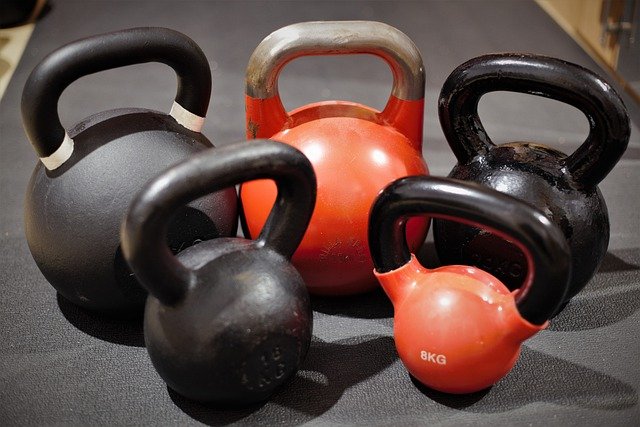
Can Kettlebells Cause Injury? (13 Vital Things To Consider)
Kettlebell workouts have surged in popularity over the past few years, thanks to their ability to provide a full-body workout in a short amount of time.
These cast-iron weights, which originated in Russia, are now a staple in gyms worldwide. They offer a unique combination of strength training, cardio, and flexibility exercises, making them an excellent choice for those seeking a versatile and efficient workout tool.
However, as with any form of exercise, there’s a potential for injury. The question of whether kettlebells can cause injury is a valid one and deserves a thorough examination.
This article aims to delve into the design of kettlebells, common injuries associated with their use, and how to prevent these injuries.
Can Kettlebells Cause Injury?
If you use kettlebells incorrectly, they can cause injury. Kettlebells can cause bruising, muscle strains, and even broken bones if they are not handled correctly. It is therefore important to be properly instructed in their use before attempting to lift them, as they travel differently compared to regular equipment such as dumbbells and barbells because their centre of mass is off offset. Additionally, it is important to warm up before using kettlebells and to lift them slowly and carefully to avoid injury.
If you are going to train with kettlebells, it’s worth taking note of some of the areas you may get injured. In doing so, it will help you be aware of the movements so that you don’t do yourself harm.
The Design of Kettlebells and Potential for Injury
Kettlebells are uniquely designed with a handle on top and the weight at the bottom. This design allows for a wide range of motion and exercises that are not possible with traditional dumbbells. However, the very feature that makes kettlebells so versatile can also lead to injuries if not used correctly.
Incorrect use of kettlebells can lead to a variety of injuries. The most common complaints are wrist pain and bruising. When you swing or lift the kettlebell, the weight should be supported by your whole hand, not just your wrist. If the kettlebell is not held correctly, it can lead to undue stress on the wrist, causing pain and, in some cases, bruising.
Another common issue is the incorrect positioning of the kettlebell during exercises. For instance, during a kettlebell swing, the weight should be in line with your forearm at the top of the swing. If the kettlebell is allowed to flip over the wrist, it can lead to bruising and discomfort.
In conclusion, while kettlebells are a powerful tool for fitness, they must be used with care and proper technique to avoid injuries. In the following sections, we will explore common kettlebell injuries in more detail and provide tips on how to prevent them.
Common Kettlebell Injuries
While kettlebells can be a great addition to your workout routine, they can also lead to a variety of injuries if not used correctly. Here are some of the most common injuries associated with kettlebell use:
- Dropping the Kettlebell on Your Foot: This may seem like an obvious one, but it’s surprisingly common. Always ensure you have a firm grip on the kettlebell, especially when performing swings or other dynamic movements. Losing control of the kettlebell can result in it dropping on your foot, causing severe injury.
- Shoulder Injuries: Kettlebell exercises often involve movements that put stress on the shoulders. Overhead presses, snatches, and Turkish get-ups can all lead to shoulder injuries if performed with poor form or too much weight. It’s crucial to start with a weight you can handle comfortably and to learn proper form before progressing.
- Wrist Bruises: As mentioned earlier, incorrect handling of the kettlebell can lead to wrist pain and bruising. The weight of the kettlebell should be evenly distributed across your hand, not resting on your wrist.
- Lower Back Injuries: Kettlebell swings, deadlifts, and other similar exercises can put a lot of stress on your lower back. If these exercises are performed with poor form, it can lead to lower back injuries. It’s essential to keep your back straight and engage your core during these exercises.
- Muscle Strains and Rotator Cuff Tears: Lifting too much weight too soon or lifting a kettlebell incorrectly can lead to muscle strains and even rotator cuff tears. It’s vital to warm up properly before your workout and to increase weight gradually to avoid these injuries.
Related: When to Add Weight to Pull Ups? (12 Hints, Tips & Answers)
Kettlebell Swings and Back Pain
Kettlebell swings are a staple of kettlebell workouts, but they can also be a source of back pain if not performed correctly. Here’s how to avoid back pain when performing kettlebell swings:
- The Role of Hip Mobility: Hip mobility plays a crucial role in performing kettlebell swings correctly. A common mistake is not using the hips to drive the movement, leading to overuse of the lower back and potential injury. By improving your hip mobility, you can ensure that you’re using your hips to power the swing, reducing the strain on your lower back.
- The Importance of Keeping the Spine Neutral: During a kettlebell swing, it’s essential to keep your spine neutral. This means avoiding rounding your back or hyperextending your lower back at the top of the swing. Keeping your spine neutral helps distribute the load evenly and reduces the risk of injury.
- Common Mistakes Leading to Back Pain: Some common mistakes that can lead to back pain include lifting too heavy too soon, not engaging the core during the swing, and bending the knees too much during the swing. By avoiding these mistakes, you can perform kettlebell swings safely and effectively.

Avoiding Kettlebell Injuries
While kettlebells can lead to injuries, these can be avoided with the right approach:
- Proper Technique for Kettlebell Exercises: Learning and maintaining proper technique is crucial in avoiding injuries. This includes holding the kettlebell correctly, executing movements with the right form, and maintaining control of the kettlebell at all times.
- Importance of Not Pushing to Failure: While pushing your limits can be beneficial in strength training, it’s important not to push to the point of failure with kettlebells. This can lead to loss of form and potential injuries. It’s better to stop a few reps short of failure to maintain good form.
- The Role of Professional Guidance in Avoiding Injuries: A fitness professional can provide valuable guidance on proper kettlebell technique and form. They can also help you determine the appropriate weight to use and how to progress safely.
Related: Upper Back Pain After Kettlebell Swings: Causes And Treatments (10 Things To Consider)
FAQs
Are kettlebell injuries common?
While injuries can occur with any form of exercise, they can be minimized with proper technique and guidance. Kettlebell injuries are not necessarily more common than injuries from other forms of exercise.
What are the common injuries from kettlebell swings?
Common injuries from kettlebell swings include lower back pain, shoulder strain, and wrist bruising. These can be avoided with proper form and technique.
What are the risks of kettlebells?
The main risks of kettlebells include injuries from incorrect form, lifting too heavy too soon, and not warming up properly before workouts.
Are kettlebells hard on joints?
Kettlebells can be hard on joints if used incorrectly. However, with proper form and technique, kettlebell exercises can actually strengthen the muscles around the joints, improving joint health.
Final Thoughts…
In conclusion, while kettlebells offer a versatile and efficient workout, they also carry a potential for injury if not used correctly. From dropping the kettlebell on your foot to causing strains and tears in the muscles and rotator cuff, incorrect use can lead to a variety of injuries. Moreover, kettlebell swings, a staple of kettlebell workouts, can lead to back pain if performed without proper hip mobility and a neutral spine.
However, these risks should not deter you from incorporating kettlebells into your fitness routine. With proper technique, gradual progression, and professional guidance, you can safely enjoy the benefits of kettlebell exercises. Remember, it’s not about lifting the heaviest weight or doing the most reps, but about performing each exercise correctly and listening to your body.
In the end, the key to avoiding kettlebell injuries lies in education and mindfulness. By understanding the potential risks and how to mitigate them, you can make kettlebell workouts a safe and effective part of your fitness journey.
Have kettlebells ever caused you any kind of injury? Have our tips been beneficial to your training? We’d love to hear your feedback, so please share your thoughts in the comments section below.
If you’re a sports enthusiast who utilizes CBD for optimal recovery after intense workouts, then you’ve found your tribe. Welcome to Sport CBDs, where we push our limits in training and prioritize recovery in the most effective way possible.
We regularly share workout routines on our YouTube channel and offer a range of health and fitness products designed to give you that competitive edge.
Why not explore the high-quality CBD products we proudly feature on our site? Visit the Sport CBDs Store by clicking here. In addition to CBD, we also offer an array of fitness clothing and yoga accessories to complement your active lifestyle.
Until next time, we wish you the best in your fitness journey. Remember, your progress is our passion. Stay strong and keep pushing!


